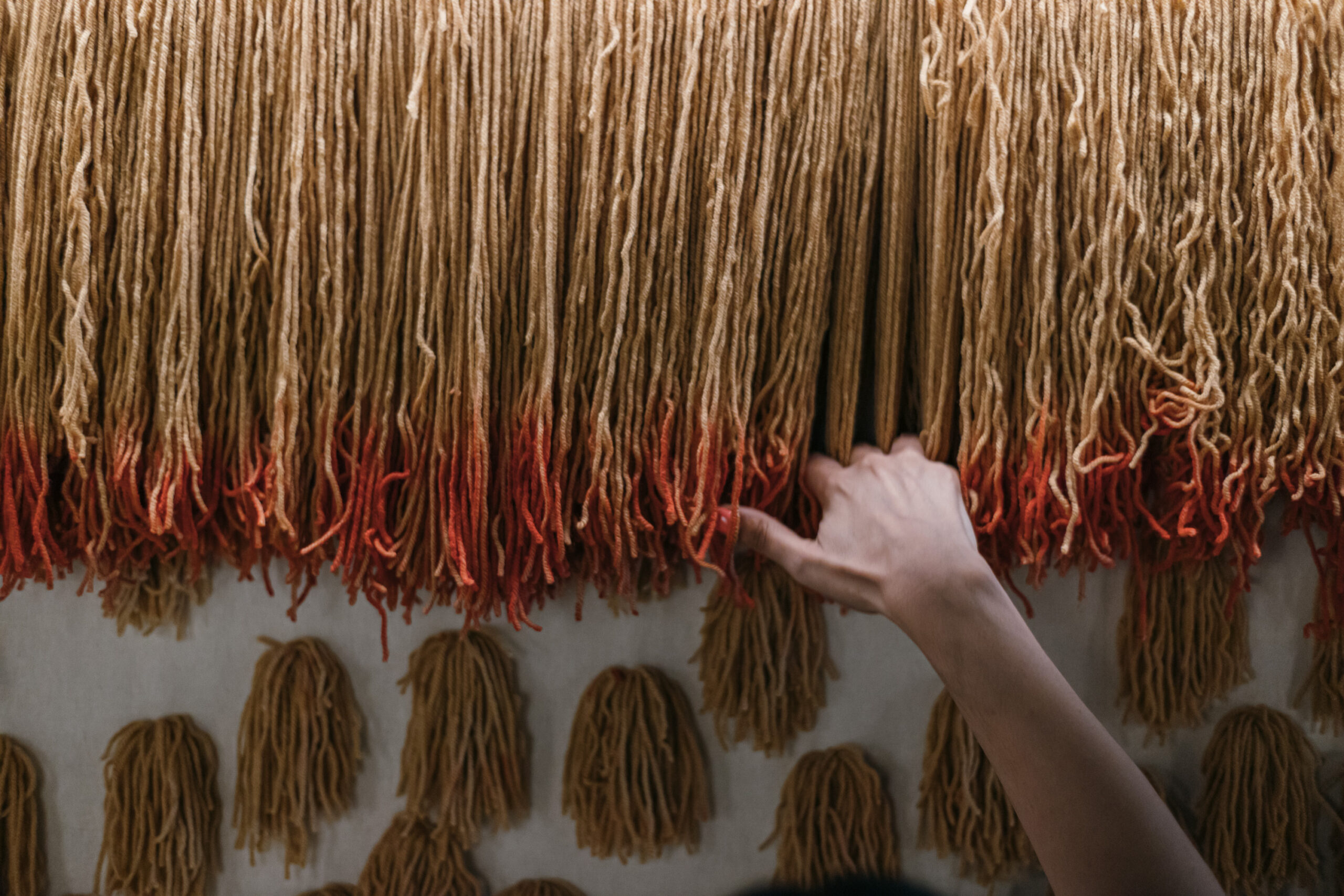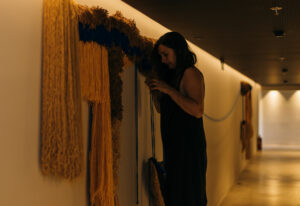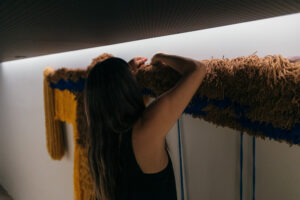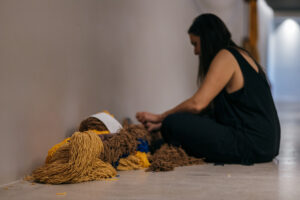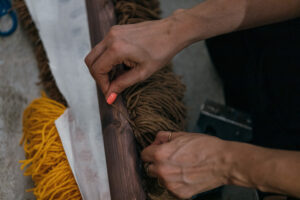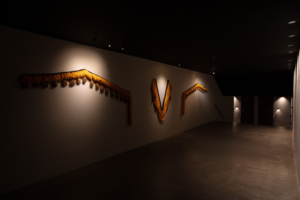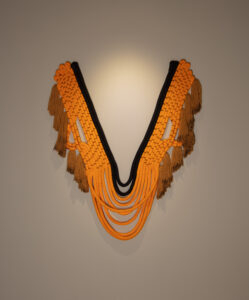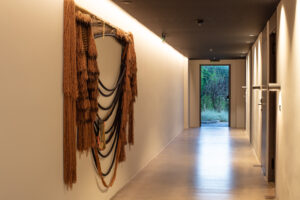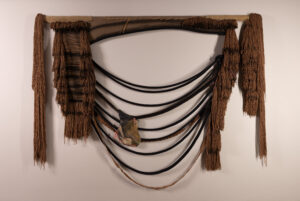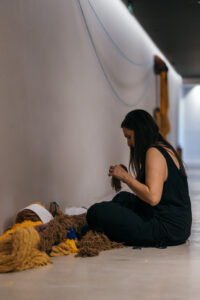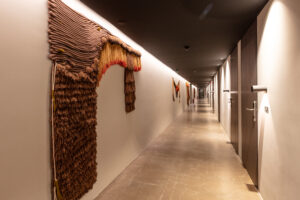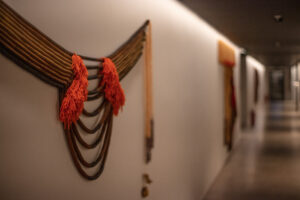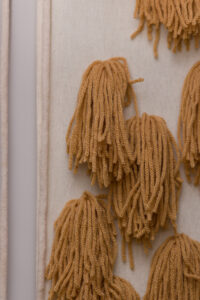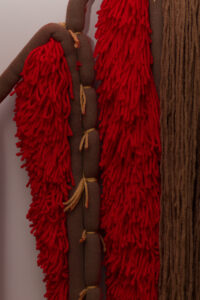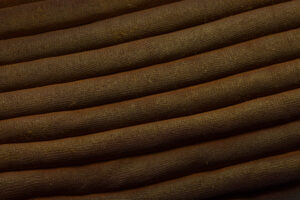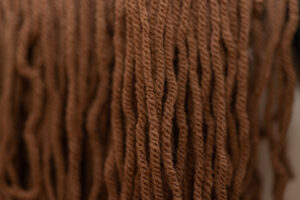Maro Fasoulis’ Nomadic Murals redefines traditional practices and narratives. Juxtaposing thread, wood, and parts of textiles from the last century, the artist proposes a contemporary composition of woven ensembles, spread across a fifty-meter-long corridor.
Fasouli’s overall oeuvre concerns architecture and building structures, weaving and tradition, folklore, and storytelling. Places, techniques, and styles have always coexisted in her work, yet what most clearly defines her work is the deconstruction and redefinition of tradition. Her ‘murals’, her large-scale installations, purposefully seem unfinished. After completing her list of rules applied to traditional weaving, she has set forth to overturn them, one by one. She ignores perfect symmetry, preparatory sketches, and ‘self-punishing’ methods that do not allow room for mistakes. She is not afraid to explore beyond the strict and suffocating boundaries of traditional practices, by creating a very personal vocabulary, characterised by decomposition and transparency, a bold colour palette, asymmetries, and freedom of movement. Although she consciously moves away from traditional weaving, Fasouli’s method is still very physical, using her body as a measuring unit and tool.
Nomadic Murals, made of thread, wood and traditional textiles, is a monumental site-specific installation. The largest textile composition the artist has created to date, it consists of multiple sections which all together create an unusual, informal collage, introducing densities and punctuations into the space, often reminding us of street art or graffiti. Some sections are connected with thread, others are not, but as a whole the work proposes a rather unusual narrative, a modular work or a paraphrase of what Le Corbusier meant by the term ‘nomadic murals’ when referring to tapestries (tapisserie). Using the distinct layout of the corridor to her advantage, Fasouli tells a complete story, with a beginning, a middle, and an end, read horizontally, and requiring our active participation with the sense of touch.
Referencing the traditional practice of Cretan weaving and by extension gender values as well, a subject to which she returns often, Fasouli creates a work intertwined with the notions of protection, warmth, and care. Besides, the art of weaving, inextricably linked to women, has always been a caring practice, with the textile often taking on the role of a protective wall.
In Nomadic Murals, Maro Fasouli creates a fifty meter long monumental textile composition of interdependent parts that together weave an open system of interpretations which is constantly regenerated, just like tradition itself.
Photography Loukianos Arnaoutakis

